Abstract
This article describes the characteristics of families with catastrophic health care expenditures. Based on data from a national sample, three overlapping groups of families are considered: those incurring annual out-of-pocket expenditures that exceed, respectively, 5, 10, and 20 percent of the family's income. Such families represent a small percentage of all families, but they account for a disproportionally large share of total health care expenditures. Nevertheless, the actual amounts spent out of pocket by most of these families are relatively small. Modest sums are financially burdensome to these families because they are more likely to be low-income and to be headed by someone who is not employed. Families with catastrophic expenditures are also more likely to be headed by someone 65 or older and, consistent with that, a greater share of their total expenditures is covered by Medicare. However, all other third-party payers cover a relatively smaller share of total expenditures for these families than they do for all families, reflecting the generally worse third-party coverage of families with catastrophic health expenditures. The implications of these findings for several current issues are discussed, including catastrophic coverage proposals for Medicare and proposed programs to help the medically indigent and the uninsured.
Full text
PDF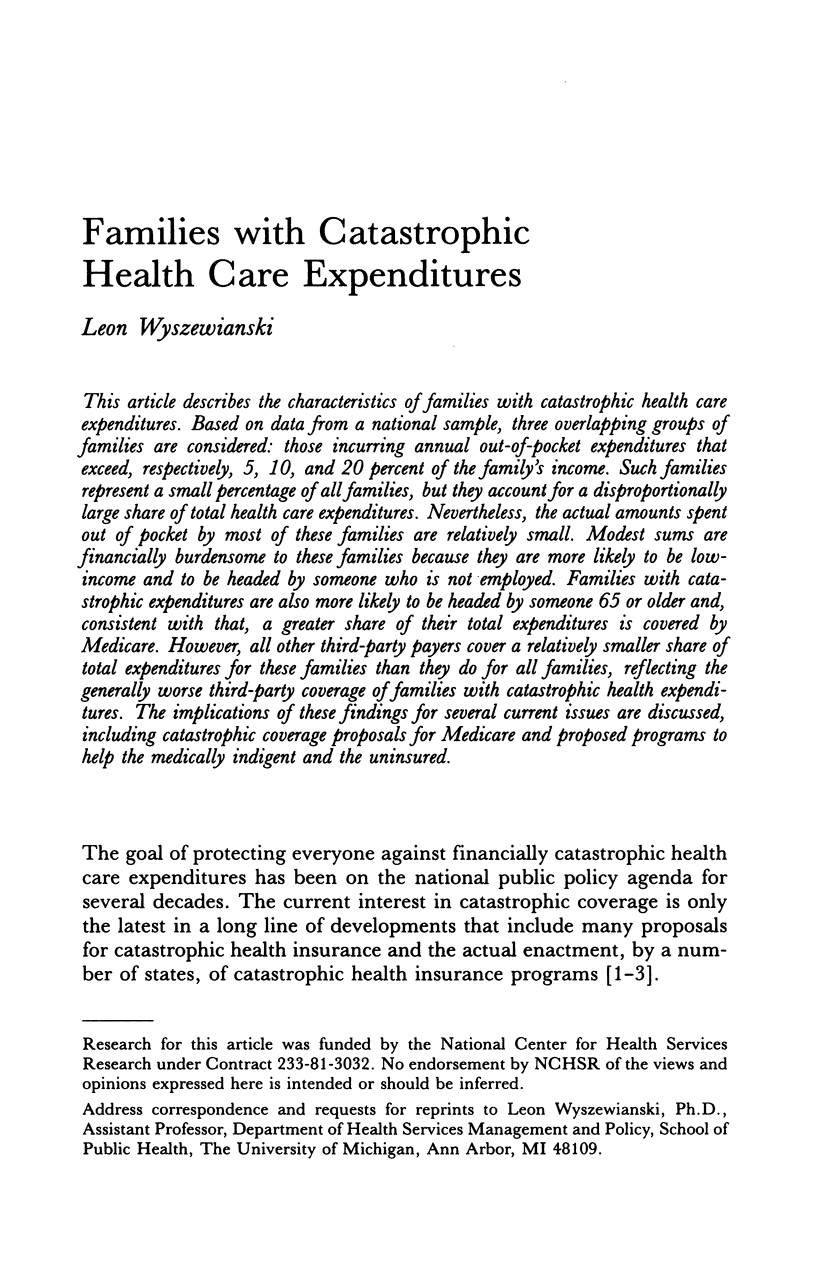
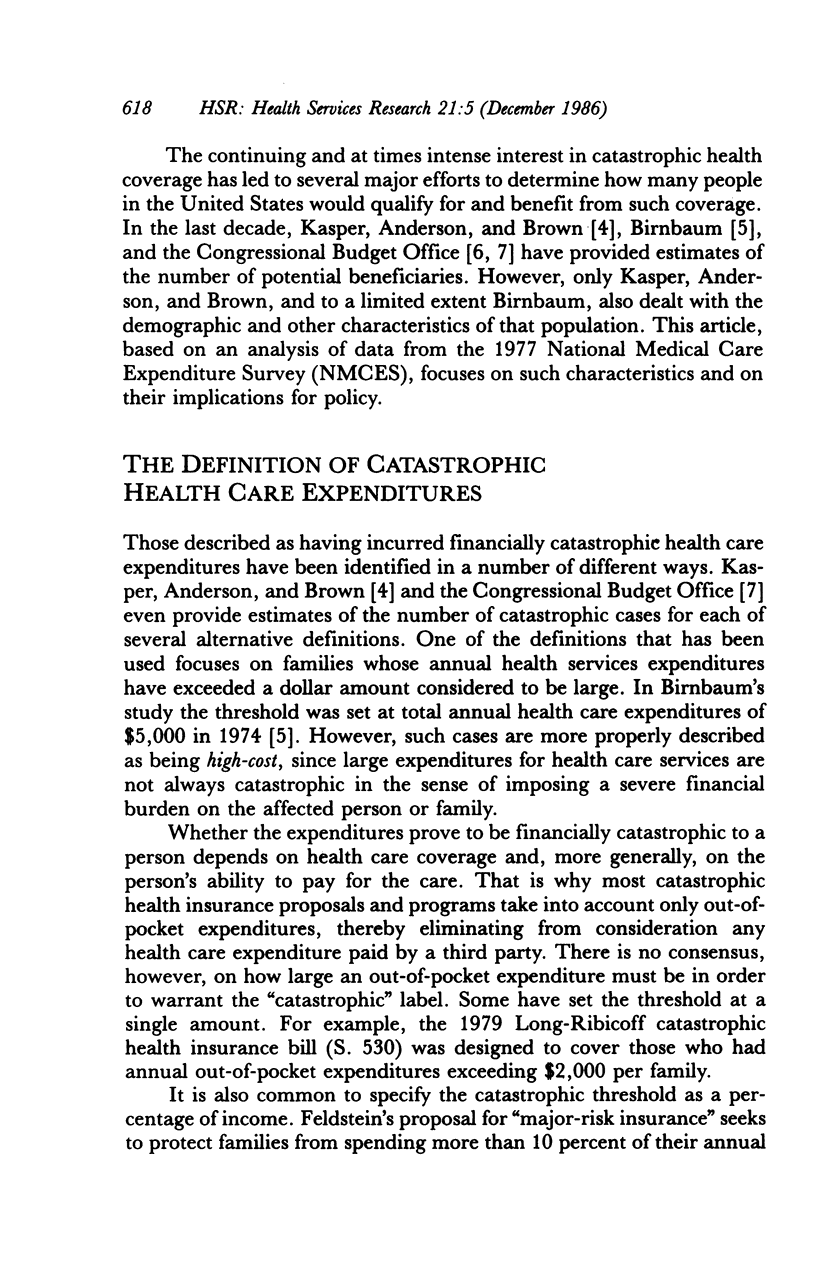

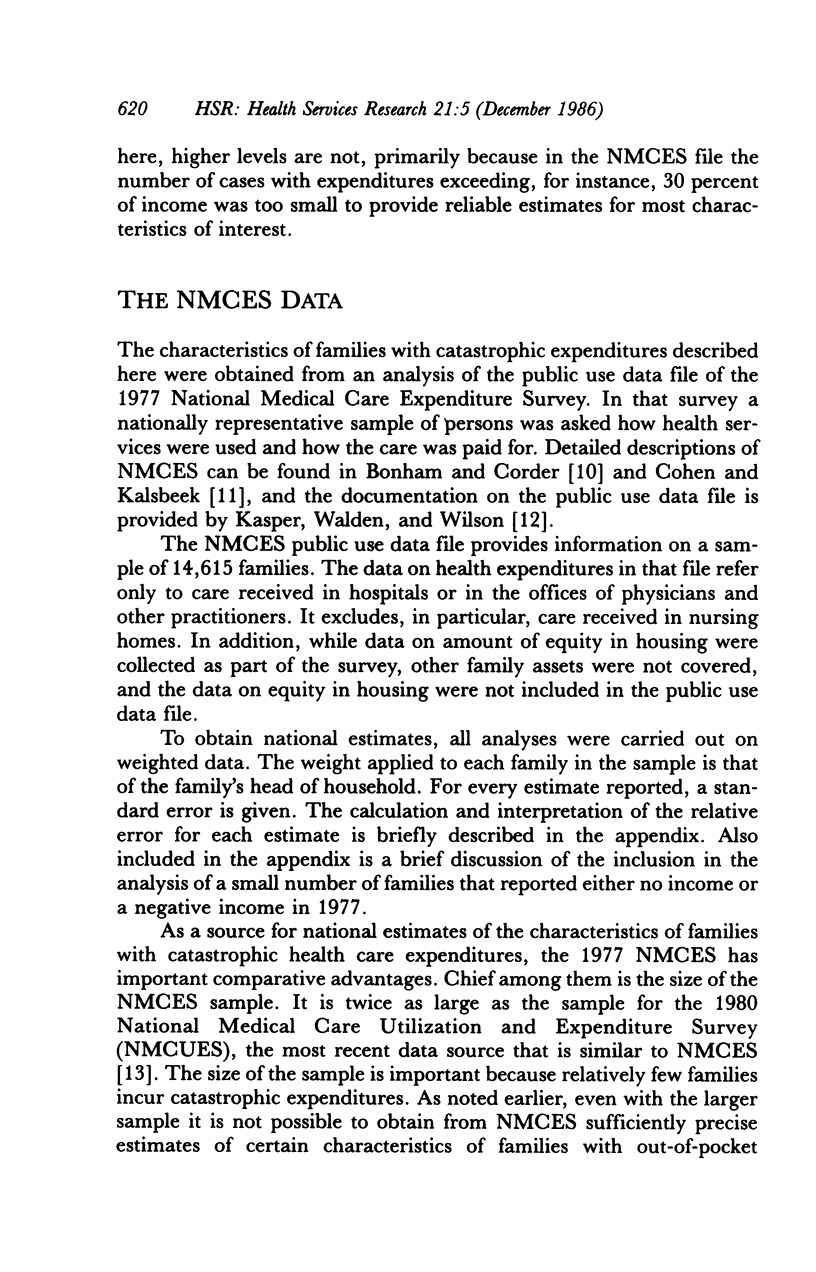
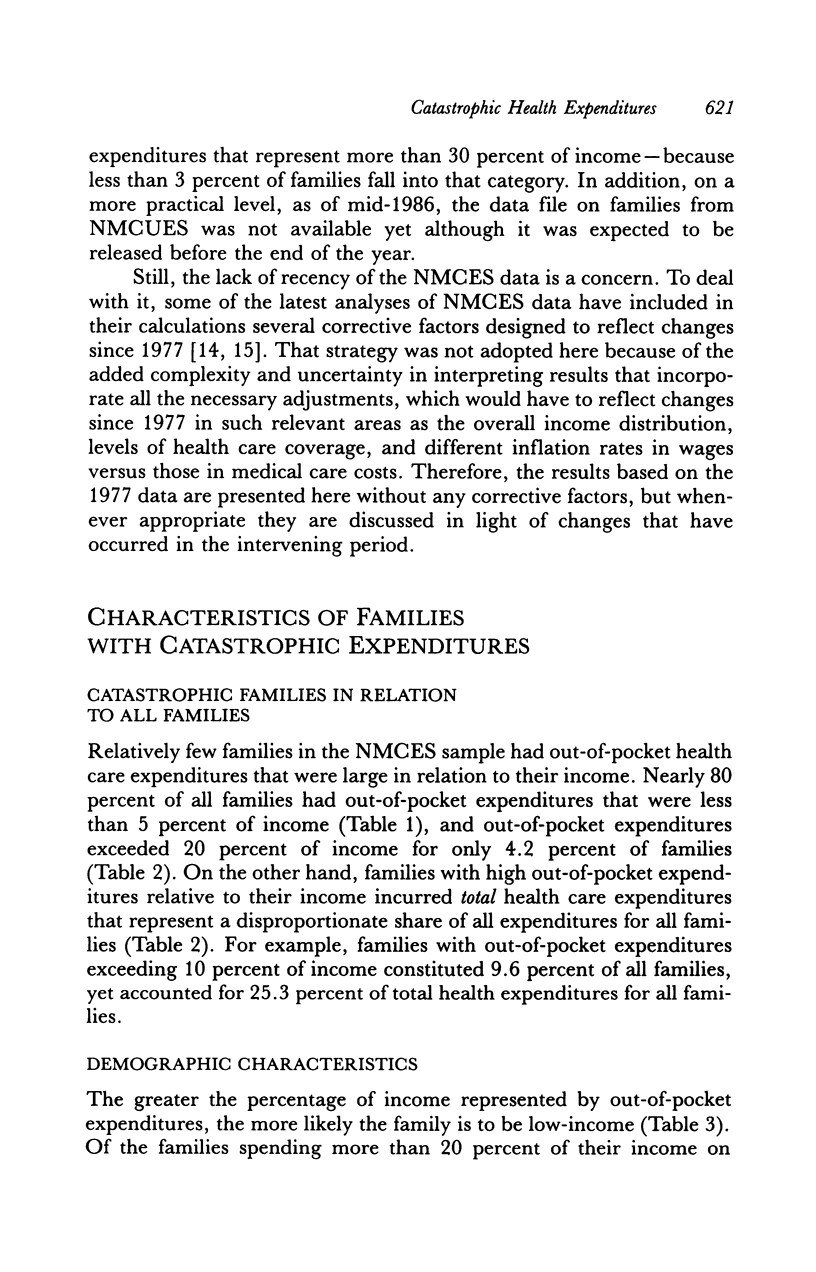
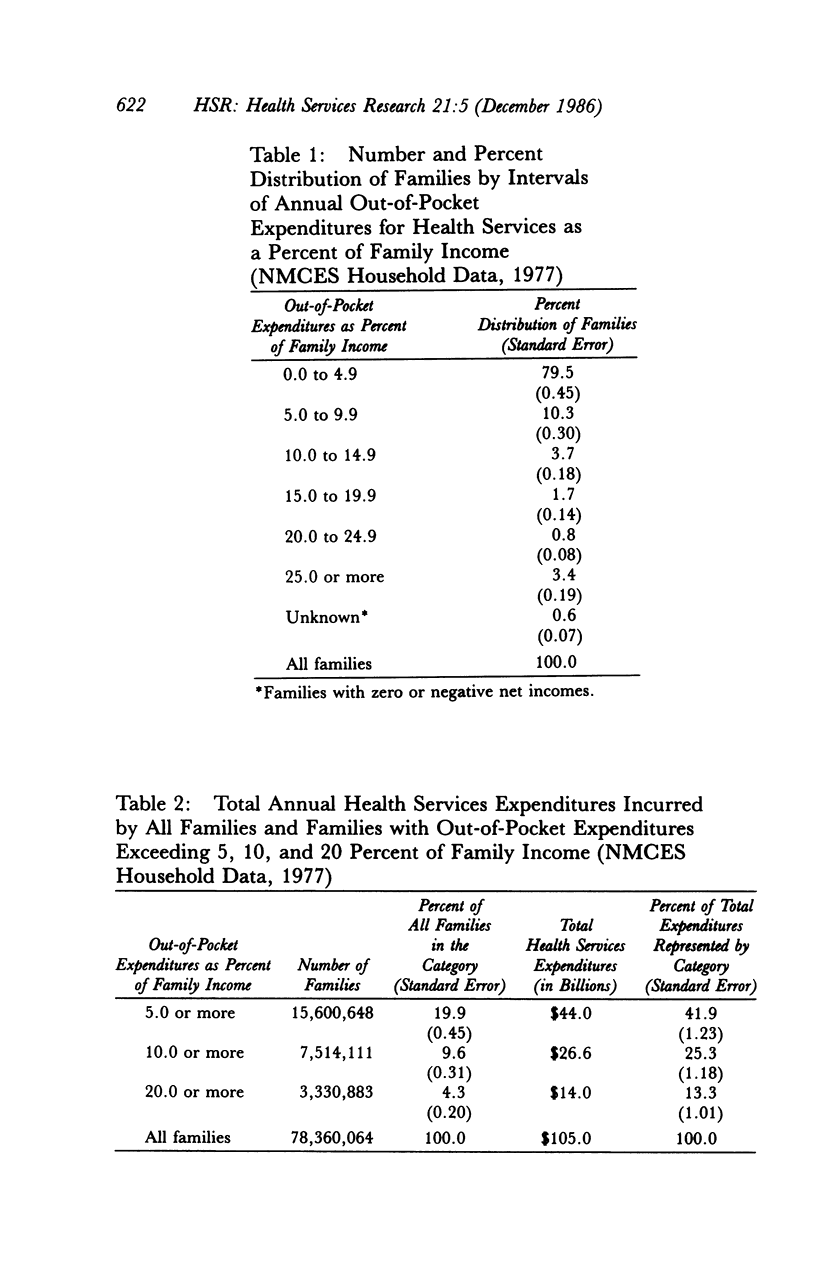
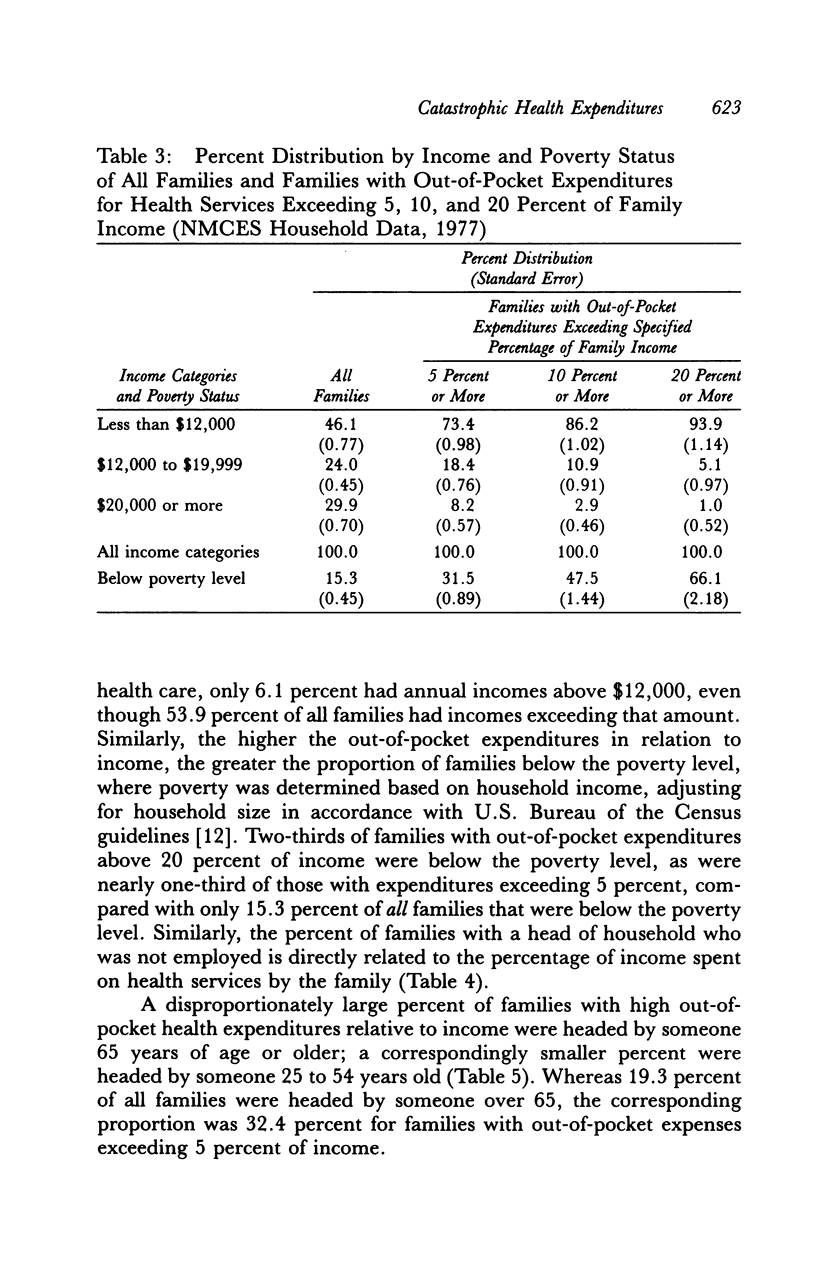
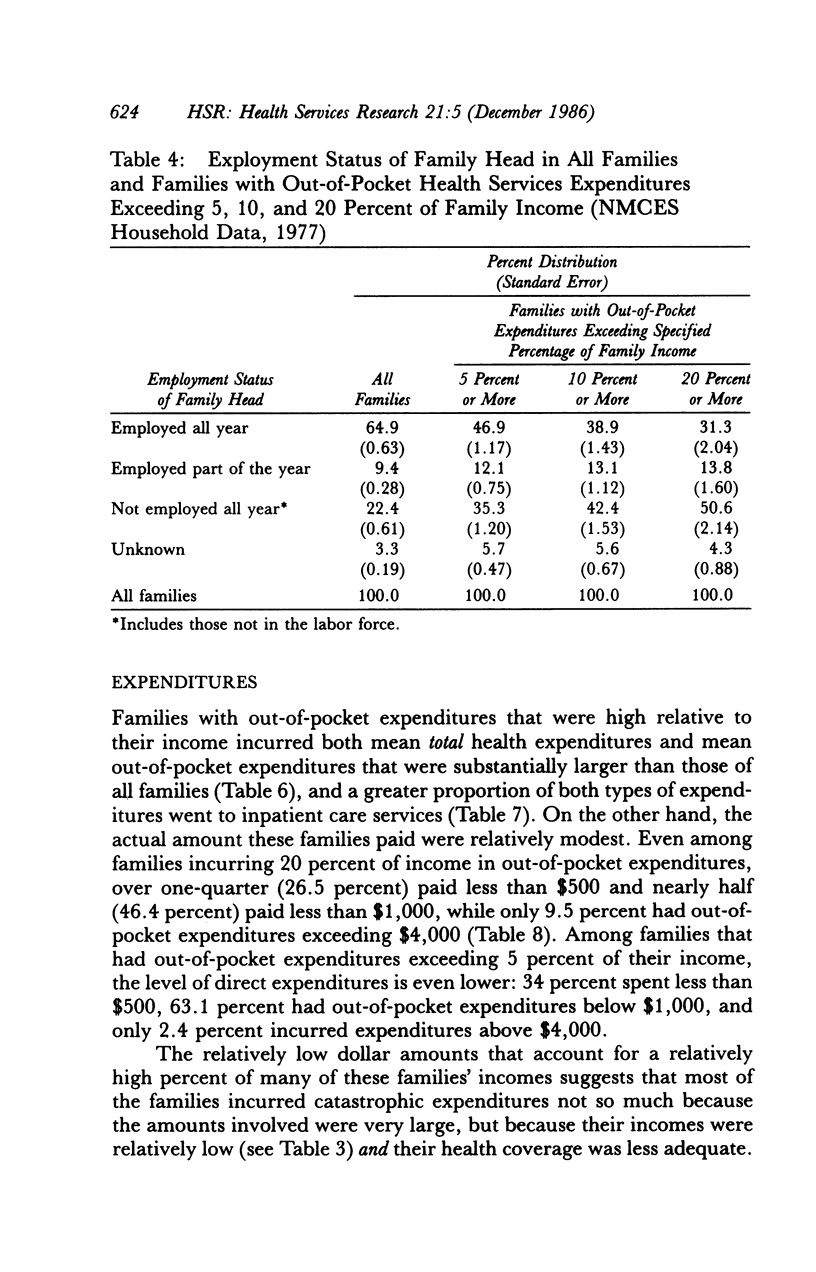
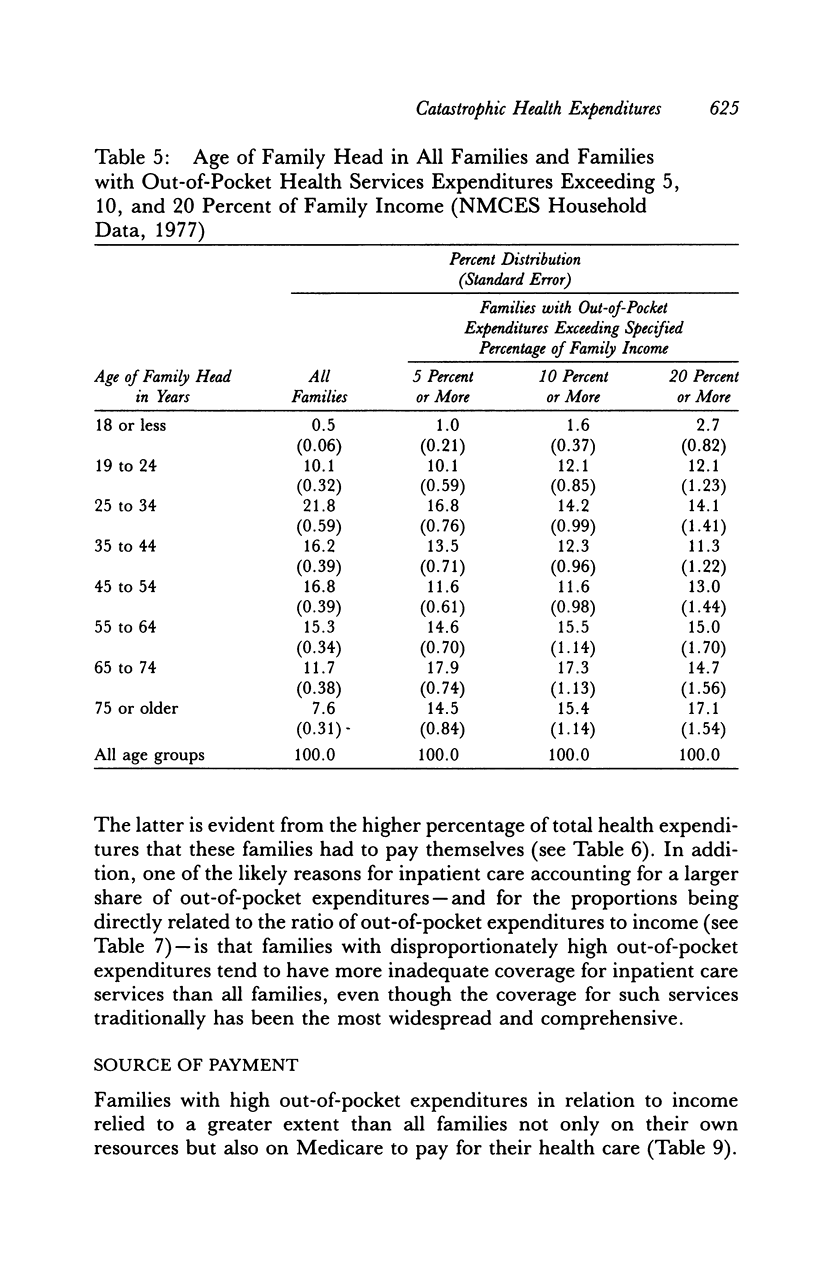
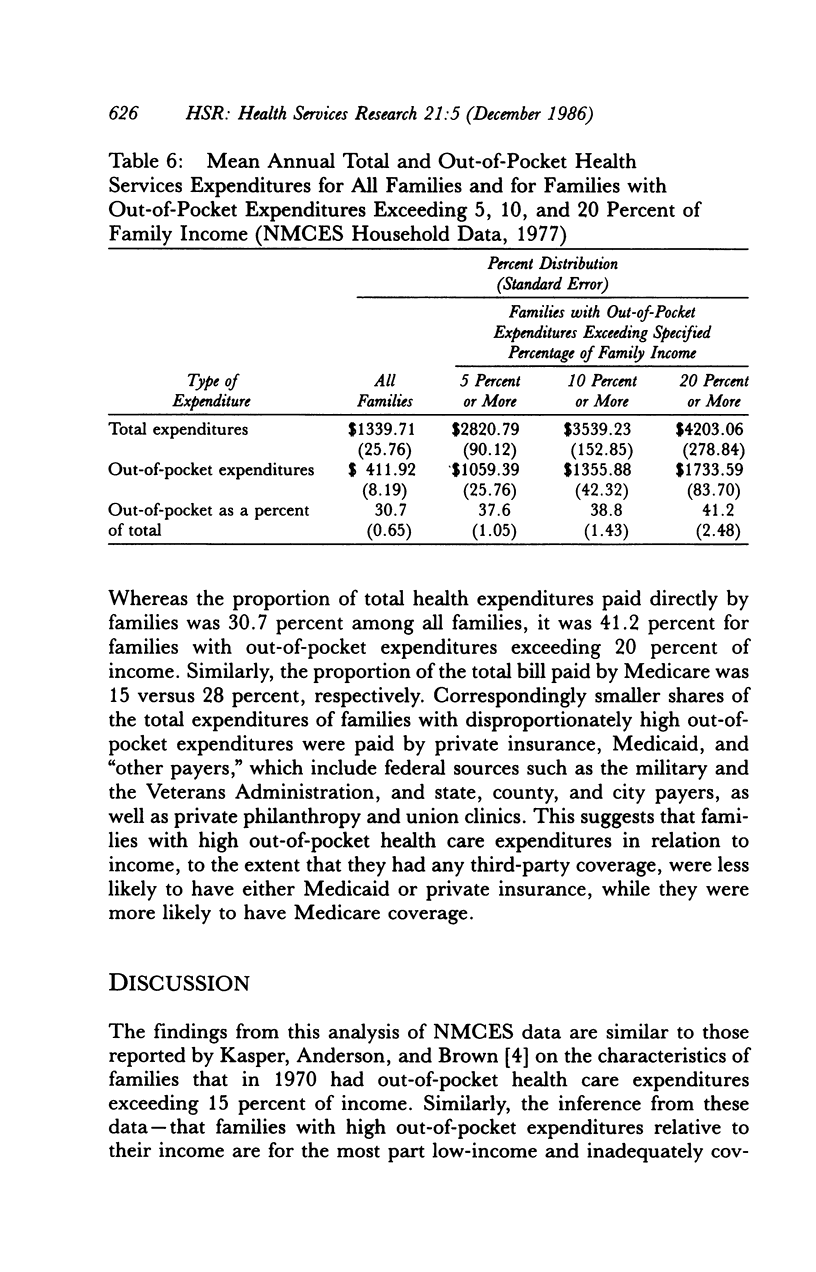
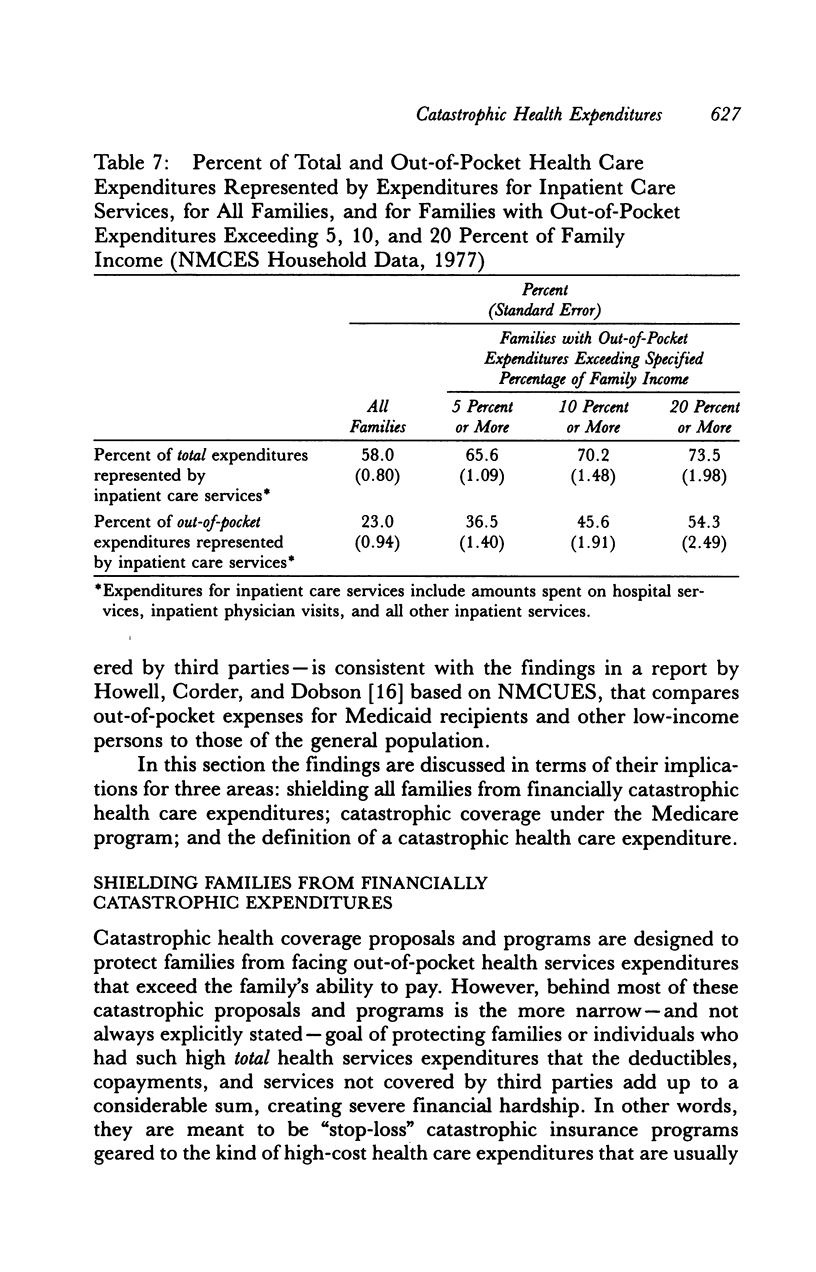
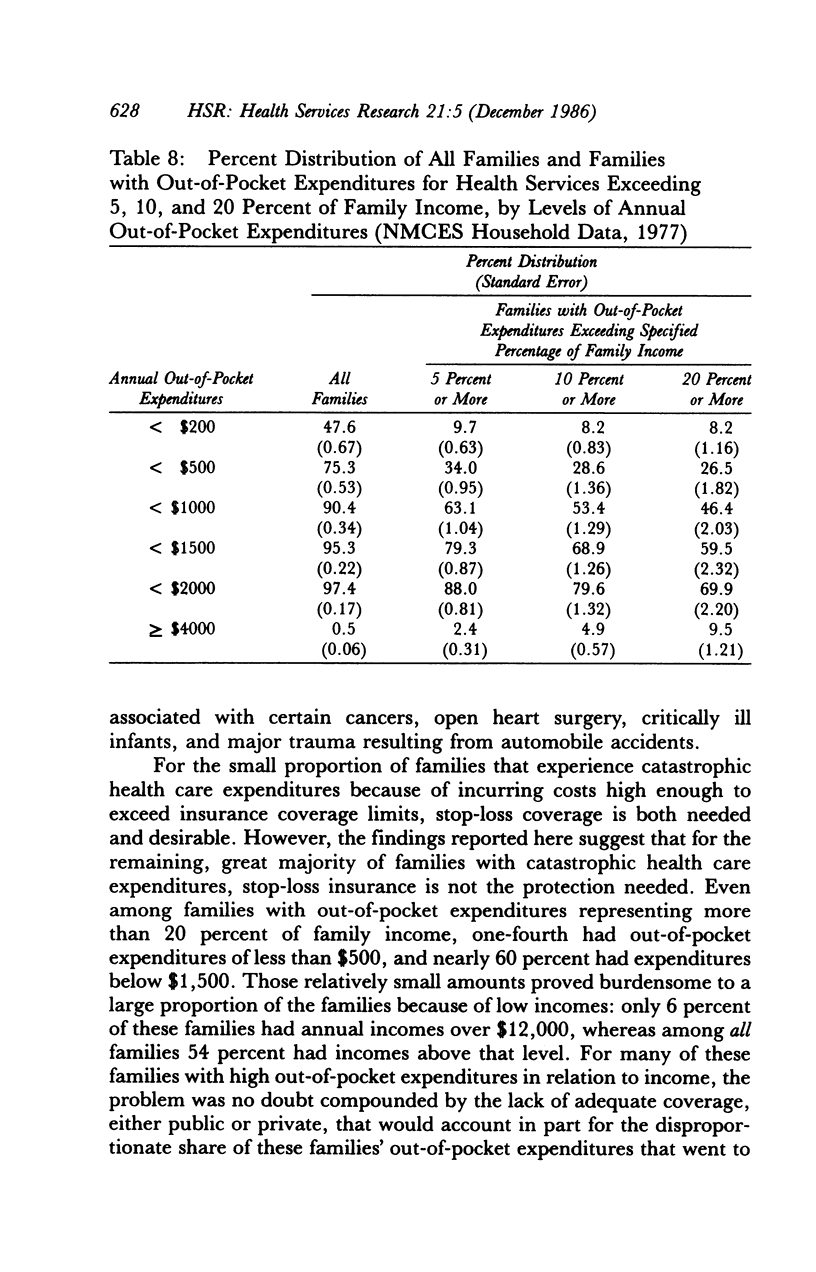

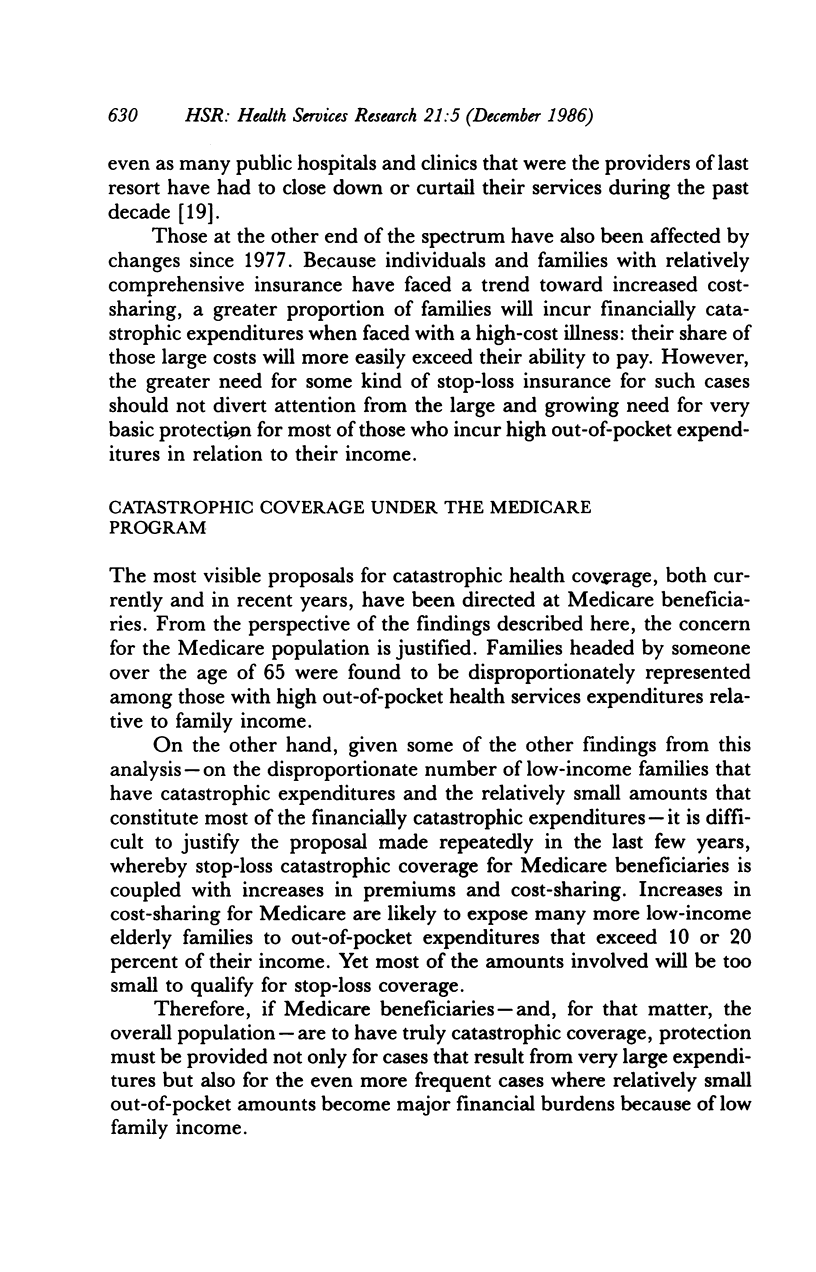
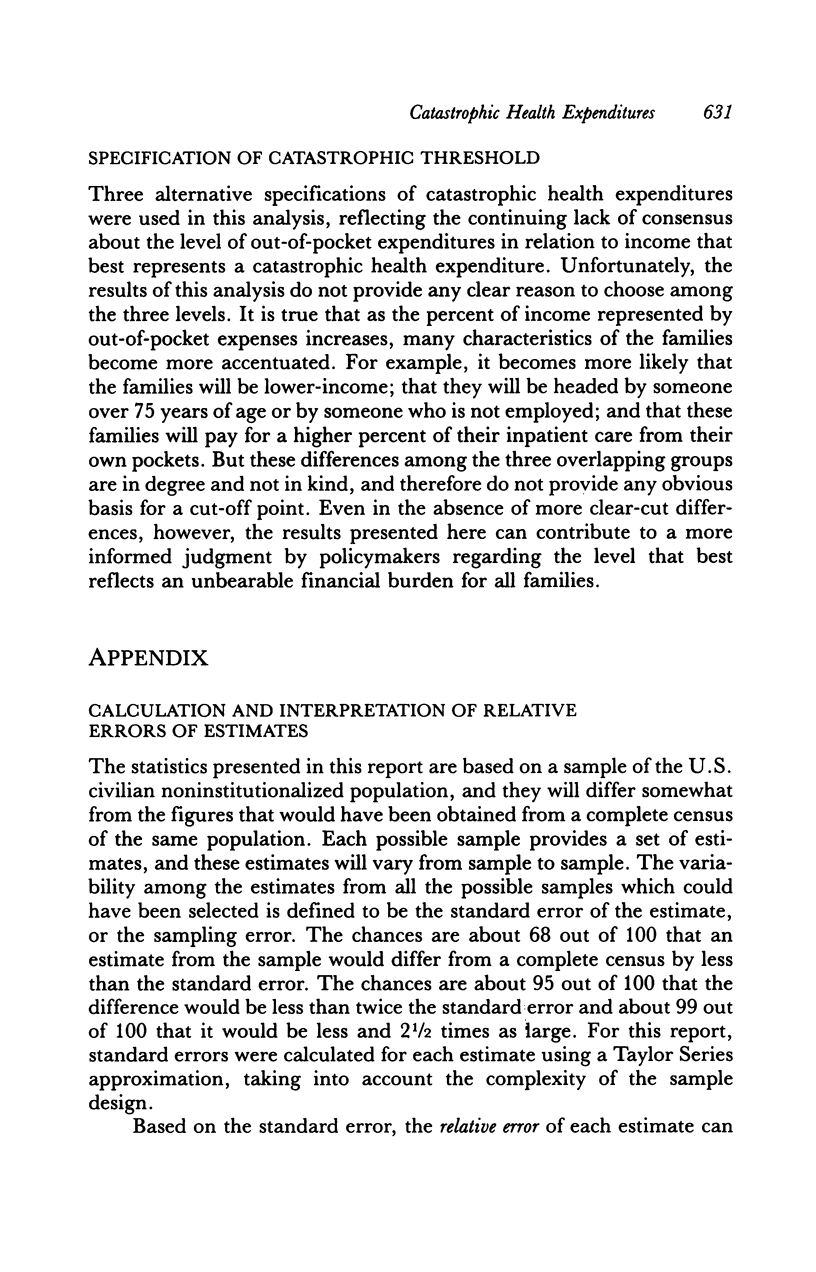
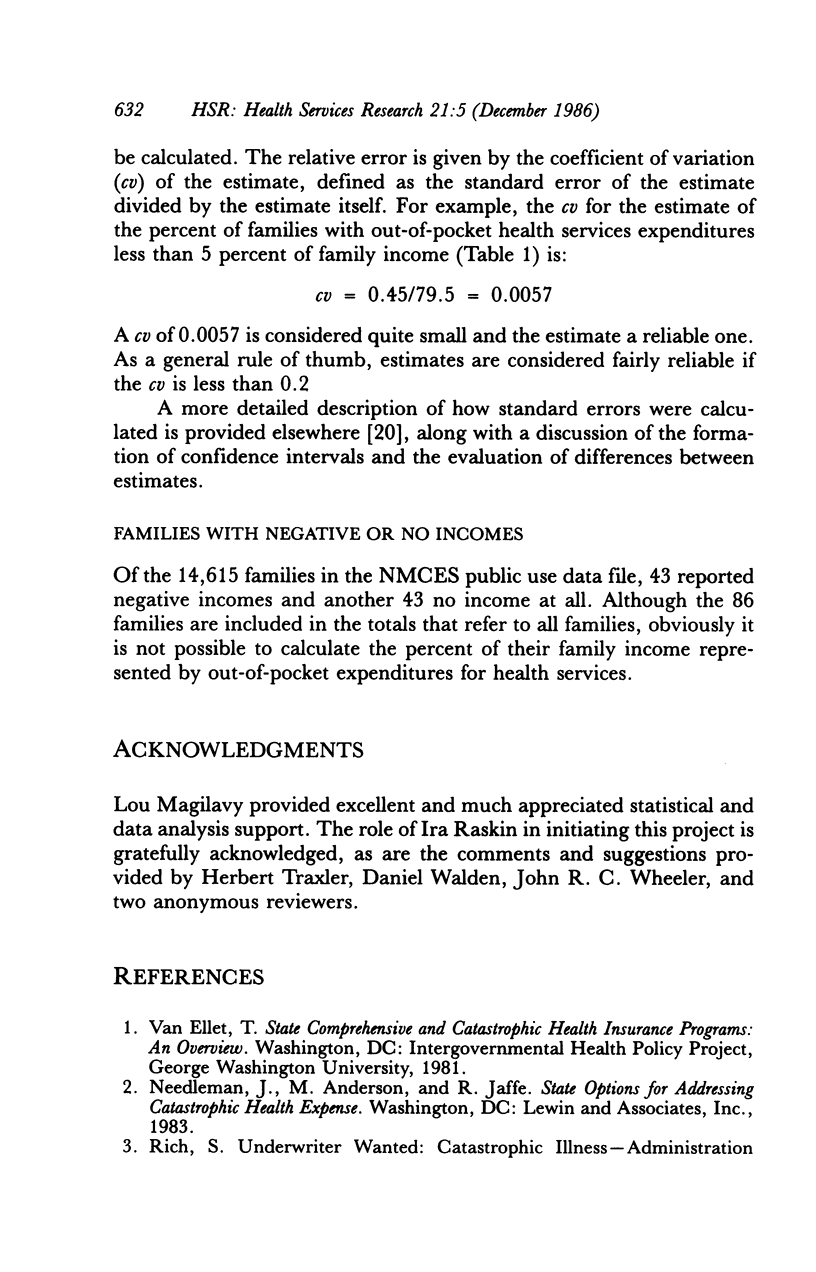
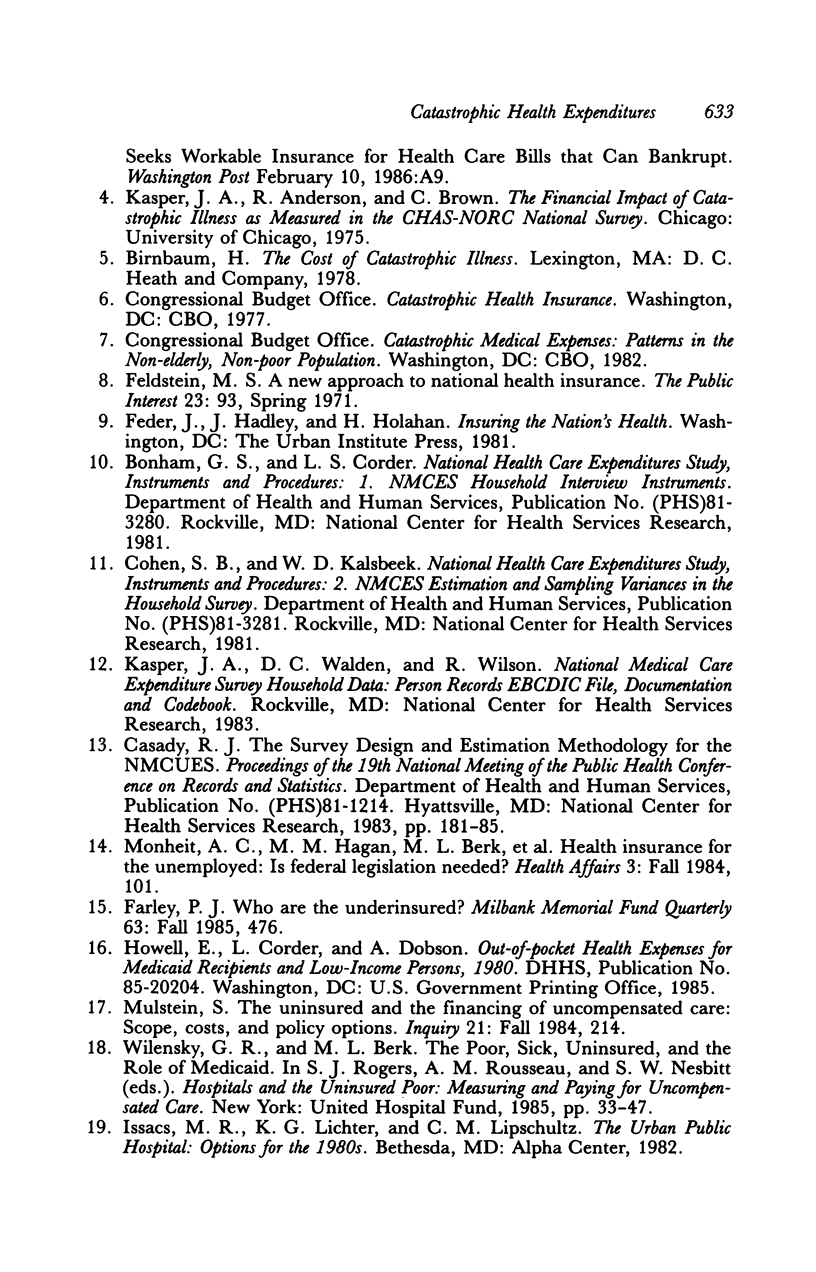
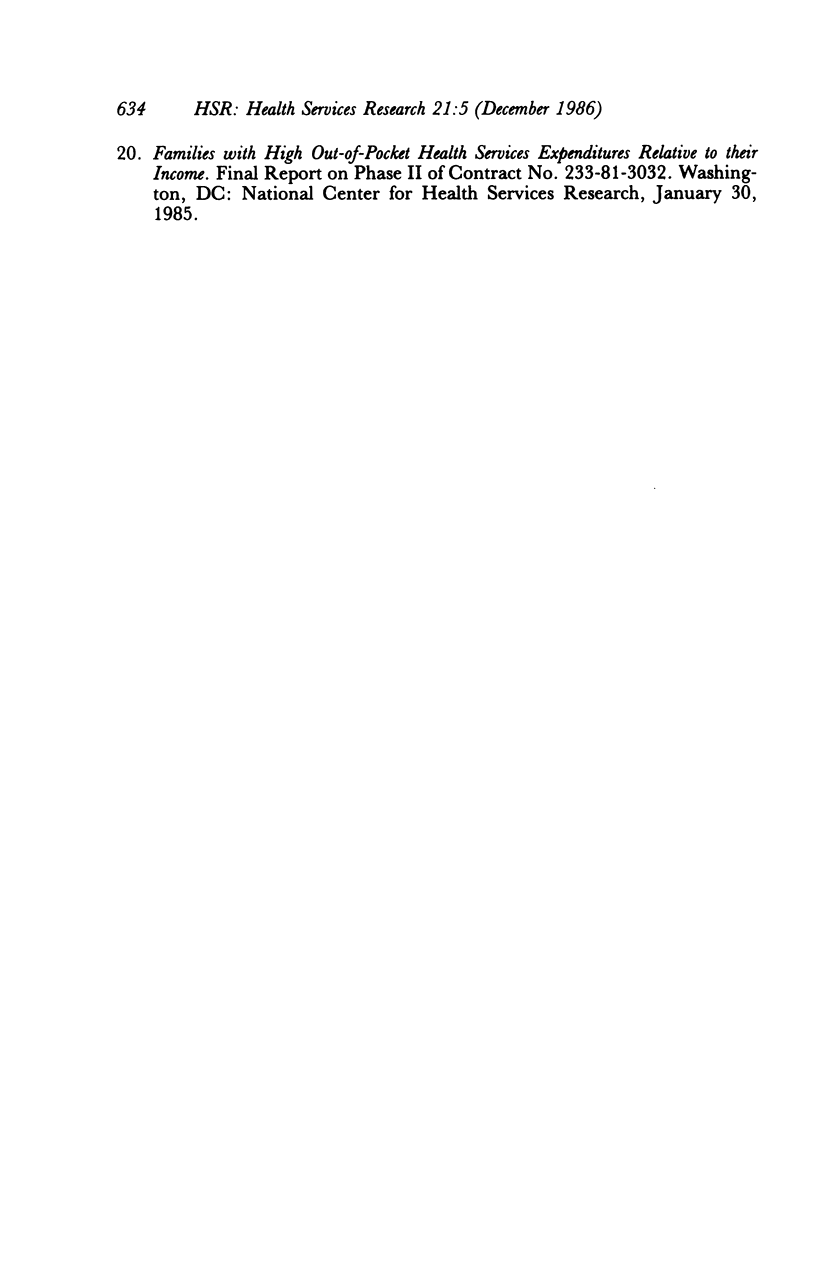
Selected References
These references are in PubMed. This may not be the complete list of references from this article.
- Farley P. J. Who are the underinsured? Milbank Mem Fund Q Health Soc. 1985 Summer;63(3):476–503. [PubMed] [Google Scholar]
- Monheit A. C., Hagan M. M., Berk M. L., Wilensky G. R. Health insurance for the unemployed: is federal legislation needed? Health Aff (Millwood) 1984 Spring;3(1):101–111. doi: 10.1377/hlthaff.3.1.101. [DOI] [PubMed] [Google Scholar]
- Mulstein S. The uninsured and the financing of uncompensated care: scope, costs, and policy options. Inquiry. 1984 Fall;21(3):214–229. [PubMed] [Google Scholar]


